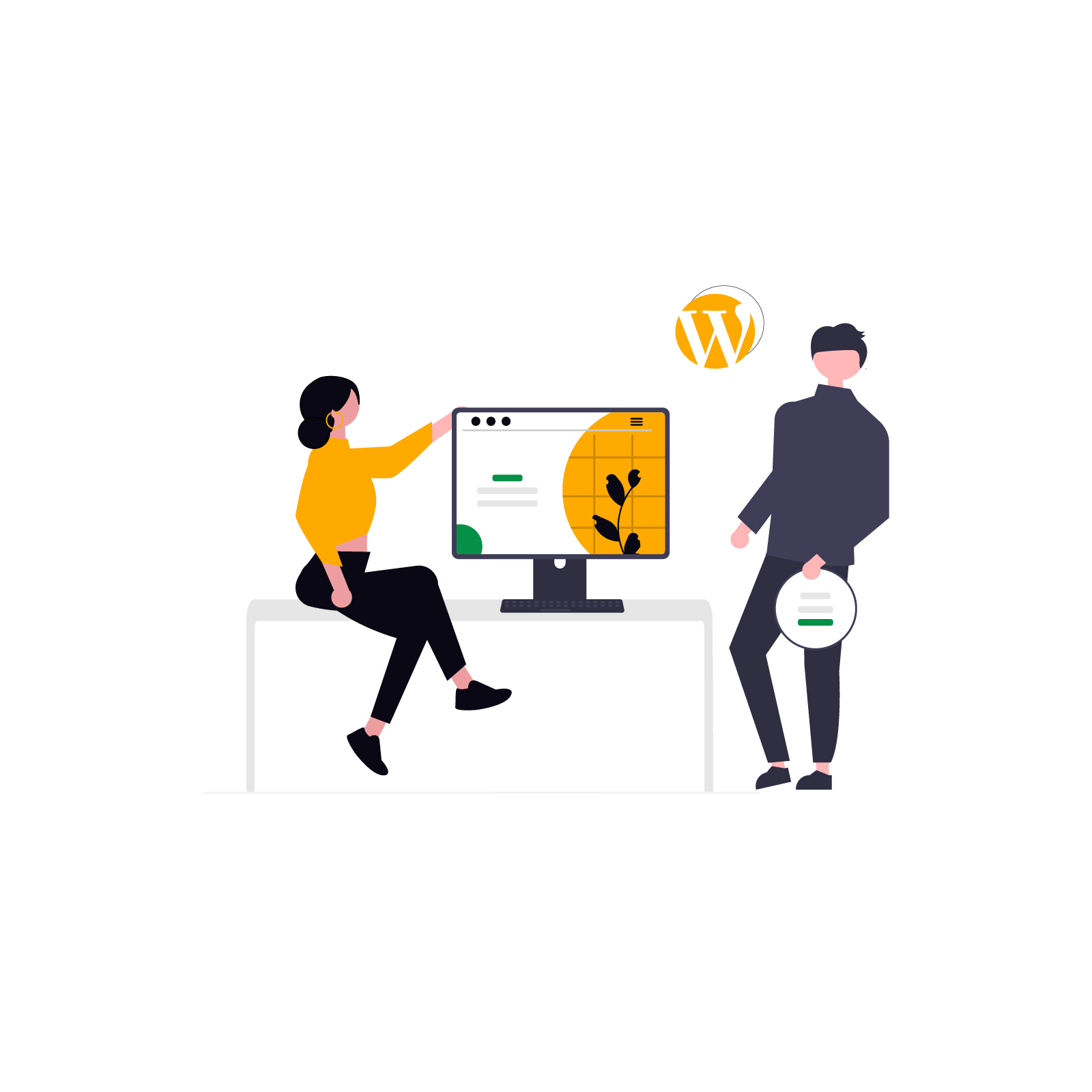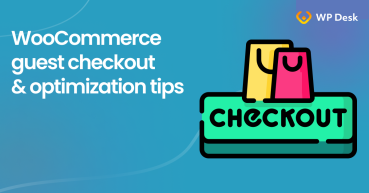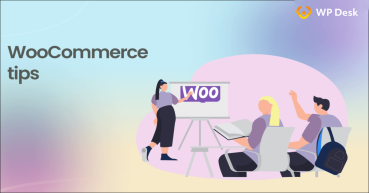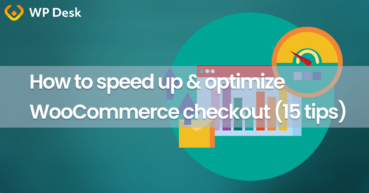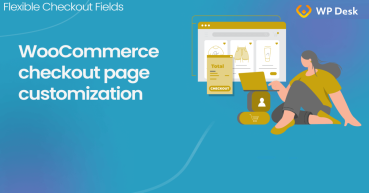Abandoned carts are definitely one of the worst nightmares for shop owners and managers, affecting not only the selling sites built on WooCommerce but all of the rest as well. They have a huge influence on a shop's total income and are considered as a lost chance for a sale. But are they really? Is there nothing that can be done about them to reduce their number? Let's take a closer look at this problem.
Contents
- What are abandoned carts?
- Is shopping cart abandonment a serious threat?
- Why are my customers abandoning their shopping carts?
- Abandoned carts at WooCommerce – what can I do?
- The customer comes first - User Experience improvements to reduce abandoned carts at WooCommerce
- Earn, develop and keep your customers’ trust
- Install SSL certificate and use third-party protection
- Expose the trust logos and seals
- Show your customers you are real and build a relationship
- Be flexible and offer various methods of payment
- Be crystal-clear about the costs
- Optimize your shipping charges
- Be precise and visually attractive
- Keep it clear and simple
- Take advantage of social influence
- Abandoned carts in WooCommerce – UX improvements summary
- Enable WooCommerce guest checkout plus 3 small tips to get more customers
- Some tips about managing WooCommerce orders
- 5 essential WooCommerce tips to boost your sales
- How to speed up & optimize WooCommerce checkout (15 tips)
- Customize the WooCommerce Checkout Page: Tips & Tools for Success
What are abandoned carts?
Before we start we need to fully understand what the abandoned carts really are. To make it easier we are going to use an example and keep it visual.
Imagine you are in a grocery store and want to buy some vegetables for dinner. You’ve put all the products you needed in the cart and you’re going slowly to the checkout counter. Suddenly, PUFF! – something happens. You are leaving your cart with all the products in deserted on the floor and walk out of the shop – without paying and without the items you came here for. The shop owner didn’t get his payment in the end either and was left disoriented without grasping the reason behind your behaviour.
This example illustrates perfectly what’s behind the ‘abandoned cart’ phrase and shows the issue of the problem. Relating this to the e-commerce reality, an abandoned cart is nothing more than a situation when a shop visitor adds some products to the cart but leaves without paying and finalizing the transaction. Now, knowing what it is all about, here comes the question – is it really a serious threat and if it is, how to prevent it? Let’s see some numbers to learn the scale of a problem.
Is shopping cart abandonment a serious threat?
Shopping cart abandonment is certainly one of the most common and important concerns the shop owners need to deal with. According to data gathered by Baymard Institute based on 41 different studies, the current average abandonment rate is about 69,57%. It exceeds up to 80% and higher for specific industries and is still rising. It means that for every 10 people visiting your shop, 7 or even 8 of them leave without buying anything.
Misreading the reasons why your shop visitors actually don’t end up buying your products may not only lead to misplacing the e-marketing actions and generating costs but also to a loss of a huge amount of money as well – your potential sale income. To make it even worse the shopping cart abandonment is a phenomenon that can’t be completely eliminated but only reduced. That’s why it’s so important for shop owners to take necessary actions to minimize it as fast as possible, despite the industry you’re in and the products you are selling. But how to solve this problem? The best way to start would be asking yourself a question…
Why are my customers abandoning their shopping carts?
The question seems to be rather obvious but the answer may not be so evident at all. In fact there are many reasons which may affect the amount of the abandoned carts in your shop. Luckily it’s not a guessing game so we can make use of publicly available studies to give us some tips. Let’s have a look on a Baymard Institute research below:
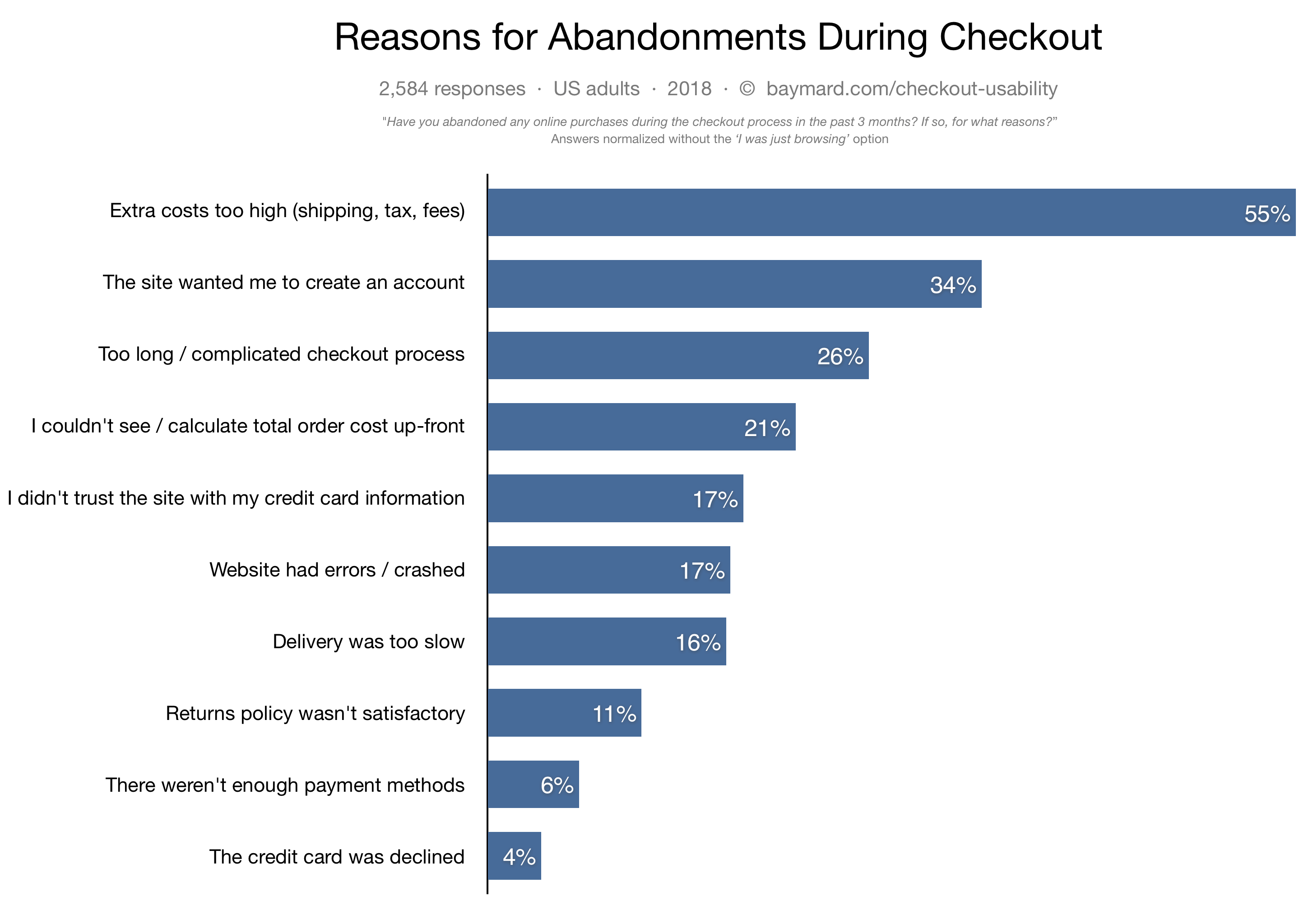
According to the chart, the cart abandonment reasons could be classified into two main categories – the first one related to bad User Experience (UX) and the second – let us call it ‘technical’ – caused by the poor quality back-end solutions and not effectively optimized shop configuration. Of course the chart contains only the 10 most popular answers and there are still many not mentioned reasons here. However, the remaining ones can be assigned to these two groups as well. Just keep on reading – we will introduce them step by step.
Knowing our enemies by now let’s see how to fight them successfully on our turf…
Abandoned carts at WooCommerce – what can I do?
Having read up to this part may suggest you are running a shop built on WooCommerce and are strongly willing to improve your sales. Good news! Everything you need to make it happen is most probably within your reach.
WooCommerce as an Open Source selling platform gives you almost total freedom and grants possibility to manage and implement many modifications to your shop on your own. Some further described improvements will require the usage of third-party tools, installing additional plugins or reconfiguring your shop but don’t be afraid - they will bring you closer to achieve your goal and to reduce the abandoned carts. So let’s get straight to the point…
The customer comes first - User Experience improvements to reduce abandoned carts at WooCommerce
What’s the most important factor in selling online? Yeah, that’s right – the customers. They do almost all the work by buying your products so it’s pretty obvious you have to do everything you can to take care of them properly and keep them satisfied. Here we bring you some clues and good practices about how to improve the visitors’ experience with your shop. What’s extremely significant at the beginning is to…
Earn, develop and keep your customers’ trust
Buying online, although being so popular nowadays, is still suffering from the lack of the ‘human factor’ and face-to-face interaction. That’s why before somebody decides to place an order in your shop, he subconsciously evaluates if it is trustful enough to spend his money there. What you need to do is to ensure you’ve done more than needed to guarantee a complete safety - to him, his personal data and his money, especially after GDPR’s entrance into force. There are a few simple, yet very effective steps to make your visitor feel more comfortable and safe.
According to the results of Baymard Institute research the occurrence of the so-called ‘Trust Seals’ have a significant influence on customers’ feeling safe, especially when it comes to a credit card payment. CXL Institute expanded these studies and came up with a conclusion that the most trustful are the ones people are familiar with. But do these results really have a reflection in customers’ behaviour? Well, definitely yes, but not to be baseless, let’s see the chart below:
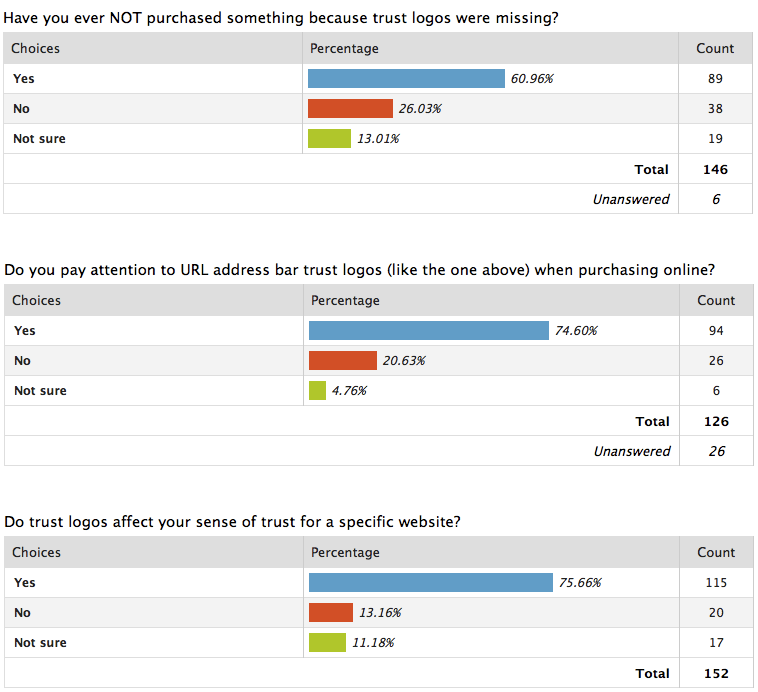
The conclusion coming from the data gathered by Actual Insights is pretty clear. Almost 61% of potential customers abandoned their carts because of missing ‘trust logos’. Nearly three quarters of them declared to pay attention for their occurrence and a little more – 75,66% admitted they affect their sense of trust.
As you can see such an inconspicuous factor at the first glimpse could have a really huge impact on the customer experience and the abandoned carts in the end. You will ask - OK, but what can I do about it? Check our solutions below.
Install SSL certificate and use third-party protection
Nowadays HTTPS is not only a common web standard but even a must-have for every e-commerce site. What’s more the modern browsers automatically inform the visitors the site they are trying to reach has not a valid SSL certificate installed and mark it as unsafe. This usually lights up a red warning light in the visitors’ head suggesting leaving the site. If your shop is still not running on ‘HTTPS’ check our detailed guide on How to secure your shop and install a free Let’s Encrypt SSL certificate.

You may also consider applying for a commonly recognized website protection certificate such as McAfee SECURE, Norton SECURED or similar. Although they are most often not so cheap and paid solutions, some of them have free plans or trials to check before purchase with money-back guarantee.
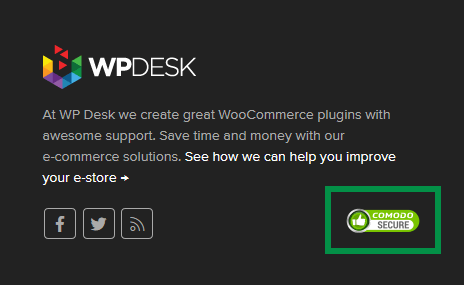
Expose the trust logos and seals
As we’ve previously mentioned you need to constantly ensure your visitors that buying products from your shop is completely safe. You have to let them know what safety measures you’ve exactly provided and what’s the better way than keeping it visual?
If you are offering payment methods involving third-party processors such as PayPal, Amazon Pay, Stripe, Skrill and so on, which you probably are by now – use it as your advantage!
Place their logos in the WooCommerce shop footer area to be displayed on every single page. If there is an option to pay by credit cards too, include VISA and MasterCard logos as well. Make sure they are visible and appearing especially on the most crucial stage of purchase – on the checkout page near the available payment methods. You may also add some proper text notices to stress that there is also someone else responsible for the payment security. The occurrence of the so-called ‘trust-logos’ is nowadays definitely one of the most trust-generating factors in the whole e-commerce so simply place them and let them do their thing.

Show your customers you are real and build a relationship
People buying online often consider subconsciously the scenario what may happen if something goes wrong during the purchase. They feel the need to have a confirmation that there are also people standing behind the shop site, willing to help or simple just give an advice. Let them know you better. Introduce yourself, your team and tell them your mission. Be transparent - don’t hide your contact info or physical location. Stay opened to every feedback you get and take it personally. When establishing your terms and conditions take into consideration their needs and expectations. Offer money-back guarantee and friendly refund policy if possible. Grant them a feeling of being well-treated.
Be flexible and offer various methods of payment
If you haven’t already done it - give your customers a choice how they want to pay to better fit their preferences. The purpose is not only to gain their trust but also to prevent the cart abandonment when your client goes to the checkout but doesn’t find the method he wanted to use. Currently almost every third-party payment processor grants a lot of payment options by default so simply choose the one whose offer suits you best.
If you need to configure some advanced rules and conditions for displaying available payment methods e.g. depending on the chosen shipping option feel free to check our Active Payments WooCommerce plugin.
Be crystal-clear about the costs
Let’s leave the trust as it is for now and focus on ‘too high extra costs’ – the top reason of cart abandonment on a chart we published at the beginning. Taking the first position in Statista’s research classifies it as a crucial problem to deal with and suggests that a lot of customers are often not aware of additional and unexpected costs including shipping, tax and the other fees until they reach the checkout. Fortunately, there are some smart tricks to solve this issue and avoid such unpleasant surprises.
First and probably the most obvious – if the product’s nature doesn’t allow you to apply some shipping discounts – just stay fully transparent. Keep the customer informed about all the estimated costs from the start. Don’t exclude or hide the tax rates in WooCommerce options if it’s not truly necessary. For specific goods you can may want to add a shipping calculator already on the product page as well.
Optimize your shipping charges
Based on the studies of North American Consumer Technographics® Online Benchmark Survey the large amount of shop visitors take some actions to avoid paying shipping charges. Most of them always choose the cheapest shipping option but buying enough to qualify for free shipping and buying from a specific retailer who offers the free shipping by default are some popular solutions as well.
If the studies provide us with such helpful information why not use it to benefit your business and adjust it to the clients’ behavior patterns?
To tackle this issue successfully step ahead of your customers’ expectations. Optimize and reduce the shipping cost using the rules of a joined parcel. Avoid overcharging. Ensure your visitors that the shipping is fairly calculated and offer various discounts based on a cart total or product quantity. Specify the free shipping threshold. Activate the WooCommerce coupons feature and set the options on how the discounts should be calculated. All this and much more is available for you with our Flexible Shipping plugin so don’t hesitate and give it a try.
Be precise and visually attractive
Present your products not only in the eye-catching way but also give your customers a chance to get familiar with them. Use product videos and several optimized images in high resolution showing your product from different angles. Online shopping doesn’t give your customers a possibility of close examination or touching them so it’s literally almost like buying the book by its cover. Make sure you gave them a chance to get properly acquainted with the product so that they won’t regret the purchase in the future.
Keep it clear and simple
Make sure your shop layout is clear and user friendly. If it’s necessary hire the UX specialist to redesign it in accordance with the actual RWD web standards. There is nothing more discouraging and putting off the purchase decision than the general mess and content overload.
Avoid the visual distractions. Don’t let your shop be like a bustling flee market where every seller is shouting to gain your attention. Organize your products into a well-classified categories to let your customers navigate through your shop easily. According to Statista 18% of shoppers abandoned their carts because of the bad site navigation.

The good practice is to minimize the steps necessary to take from choosing a specific product to reaching the checkout. The less steps the better with 3 as a perfect value and a goal to pursue.
Many customers before making a final purchase decision are looking for the confirmation if their choice is right. Nothing works better here than a positive feedback from the other people who have already bought a product. The simplest way to make this phenomenon work for you is to activate WooCommerce reviews feature and then encourage your clients to share their opinions. Involve various social media channels and inspire your customers to show your products voluntarily. Try to build a community gathered around your shop, your products or your fanpage. Keep your website vivid and alive!
Abandoned carts in WooCommerce – UX improvements summary
That’s it for now! We are glad you made it this far. After reading this article you should be fully aware what the cart abandonment really is and how important for shop owner it is to minimize the scale of this issue. We provided you with some useful tips and techniques how to reduce the abandoned carts based on the user experience improvements. In the next part we are going to show you how to tweak your shop and learn some technical improvements to reduce abandoned carts at WooCommerce so stay tuned!
